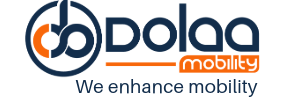Employee Commute: Empowering the Indian Women Workforce
Embarking on the daily commute is a shared experience for many working individuals, yet for women traveling alone to offices in India, it often entails unique challenges and concerns. In a country where strides toward gender equality are ongoing, women encounter a multitude of safety issues during their daily journeys. From navigating crowded public transportation to confronting instances of harassment, the path to work can be fraught with anxiety and fear for many women. As women’s empowerment in the workforce gains momentum, ensuring their safety during the daily commute becomes an urgent necessity. The higher risks of harassment, abuse, and assault that women face while traveling compromise their overall well-being and safety. The implementation of robust safety measures through an employee commute solution holds the potential to create a society where women can commute without the burden of fear. In this blog, we delve into the harsh realities that women encounter while commuting to their offices in India, shedding light on the imperative need for safer and more inclusive transportation options.

The Challenges of Women Employee Commute in India
For women in India, the daily commute often transforms into a daunting experience, replete with unique challenges that may impede their full participation in the workforce. The obstacles they face include safety concerns, limited transportation choices, and the absence of tailored solutions to meet their needs. Across the nation, women routinely confront instances of harassment, turning their commute into a stressful and potentially perilous journey. While public transportation is available, its safety and reliability often fall short. Overcrowded buses, trains, or metros expose women to uncomfortable physical proximity, groping, or inappropriate touching. These distressing encounters lead to humiliation and a loss of personal space. The scarcity of secure and dependable commuting options becomes particularly pronounced during late hours or in remote areas, leaving women vulnerable to potential dangers. Inadequate lighting, poorly maintained vehicles, and a lack of security measures further amplify their safety concerns. Additional challenges, such as poorly maintained roads, a dearth of pedestrian-friendly infrastructure, and insufficient lighting at bus stops or train stations, compound the safety hurdles for women during their daily employee commute. Enter specialized employee commute solutions, offering a beacon of hope. By directly addressing the unique challenges faced by women during their commute, these solutions provide a pathway to a safer employee transit experience. Numerous women attest that access to reliable and secure transportation provided by their employer has instilled the confidence they sought. In response to a growing awareness of the challenges women encounter during their commute, organizations are prioritizing the implementation of employee transport solutions tailored to meet the safety needs of their female workforce. Empowering women in the workforce commences with ensuring their safety and well-being from the moment they step outside their homes.
The role of Transport as a Service (TaaS)
Studies from the World Health Organization underscore a staggering reality: 35% of women globally face some form of abuse during their commutes, highlighting an urgent need for secure and dependable employee commute solutions. Particularly in sectors requiring operations during unconventional hours, ensuring the safety of employees becomes paramount. The advent of Transport as a Service (TaaS) has emerged as a transformative force in automating employee transportation operations, notably contributing to creating a safer environment for women in the workforce. But what exactly is Transport as a Service? This concept seamlessly integrates technology, operations, and fleet management to offer convenient and reliable transportation options. TaaS platforms streamline the entire experience, enabling employees to access transportation services effortlessly through a single app.For women, TaaS brings a myriad of benefits to their daily commutes. Foremost, it directly addresses safety concerns by providing access to secure and monitored transport, effectively mitigating the risks associated with solo travel. Furthermore, these platforms introduce a new level of flexibility into travel arrangements. Women can easily schedule and modify their commute plans according to their requirements, minimizing travel-related stress. Transport as a Service is fundamentally transforming how women commute, offering not just safety but also reliability, and thereby enhancing their overall work experience.
Best Practices to Ensure Safety During Employee Commute
Regulating bodies recommend best practices to address the concerns with women employee commute and enhance the corporate transportation ecosystem. These practices include
- Defining a commuting policy by the organization.
- Having fixed GPS devices in all vehicles for live tracking.
- Installing panic buttons like SOS in all cars and the employee commute app.
- Establishing a dedicated control room or transport helpdesk.
- Displaying emergency contacts for the transport helpdesk.
- Implementing route plans to avoid female employees being the first pick or last drop.
- Providing marshals or guards for female employees during the first pick or last drop between 8 pm and 6 am.
- Conducting background verification of drivers and security guards.
- Masking female employees’ mobile numbers on drivers’ devices.
- Conducting random checks for drunken driving and other possible misdemeanors.
- Utilizing SMS services for communication and notifications.
- Implementing effective incident management processes and protocols.
- Recording all incidents.
- Implementing a feedback mechanism.
An employee commute solution has emerged as a powerful tool in empowering the Indian women workforce. By addressing the unique challenges women face during their commute, these solutions are creating a safer and more inclusive work environment.
Author
dolaaadminRelated posts
DOLAA: Your Pathway to Seamless Mobility
Welcome to DOLAA, where every journey is an adventure in excellence. With a comm
Indian Perspective on Employee Commuting
Indian Perspective on Employee Commuting India, being the world’s most pop
5 Must-Have Qualities Of Great Bus Drivers
Each passenger carries a unique narrative: One passenger is en route to a pivo

